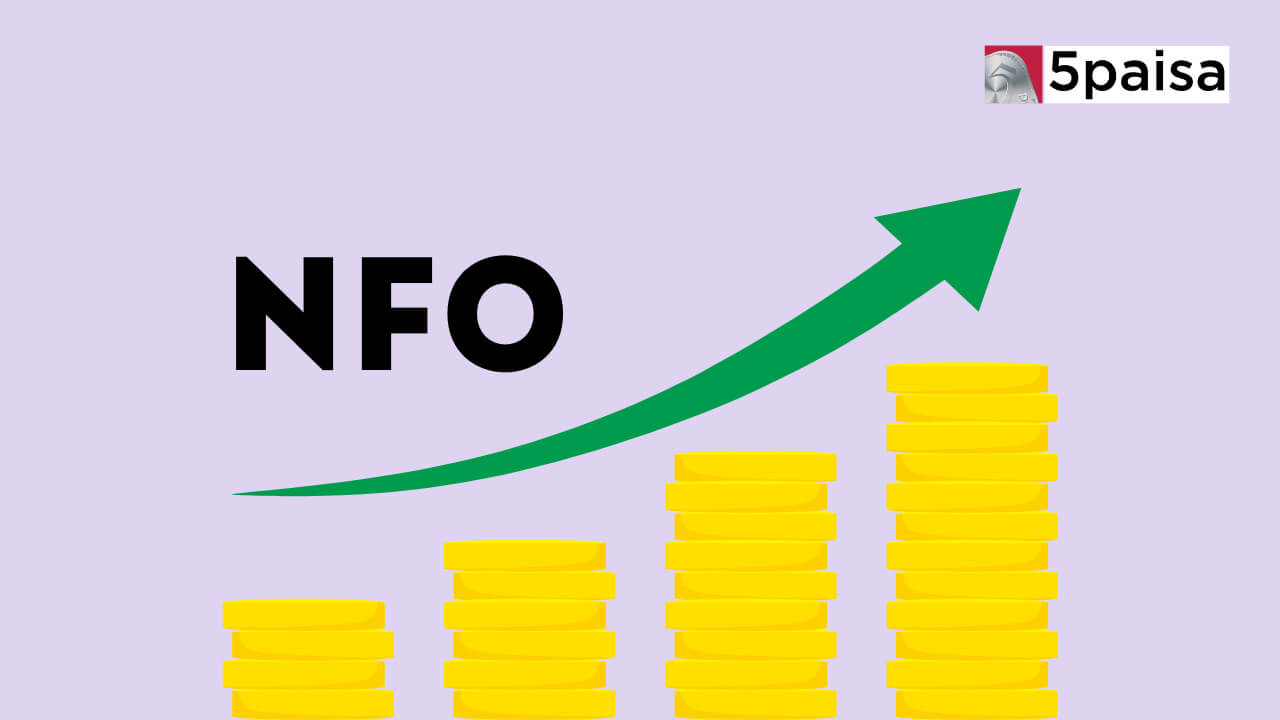List of Best Silver ETF to Invest
Best Tax Saving Mutual Funds 2023

Staying invested in mutual funds is a sensible way to reap long-term rewards. They offer diversification by investing in different companies and also brings financial discipline into an investor’s life. Furthermore, they help to save tax.
Most mutual funds offer returns in two forms: dividends and capital gains. Since the Union Budget 2020, dividends offered by any mutual fund scheme are added to the investor's taxable income and taxed at their respective income tax slab rates. The taxation rate of the capital gains depends on the holding period and the type of mutual fund. And this is exactly where tax saving mutual funds prove beneficial.
What are tax saving mutual funds?
Investments in mutual funds meant to save taxes are done through Equity Linked Saving Schemes (ELSS). All ELSS funds qualify for tax deductions and offer tax benefits to investors under Section 80C of the Income Tax Act 1961.
Taxpayers can claim up to a maximum amount of Rs 1.5 lakh as tax deduction benefits. So, if a salaried person invests Rs 50,000 in an ELSS fund, then this sum would be deducted from the total taxable income.
Like any other regular equity mutual funds, the returns from ELSS funds are linked to stock market performance. Hence, it is ideal to invest in one of the top 10 tax saving mutual funds.
How do tax saving mutual funds work?
To benefit from the tax incentives, one has to invest in ELSS funds for a minimum of three years. It is the mandatory lock-in period from the date of allotment of units. After the lock-in period is over, the units can be redeemed or switched. ELSS funds offer both growth and dividend options.
Growth option: In this type of fund, the investor receives the full redemption amount as a lump sum at maturity. Growth option mainly helps in wealth creation.
Dividend option: In this fund type, investors get dividend income through the course of the scheme. The investor can choose to receive payouts whenever the fund declares dividends, or can reinvest them.
Best tax saving mutual funds to invest
While there are numerous tax saving mutual fund schemes available in the market that assure good returns, it will be wise to invest in one of the best tax saving mutual funds for a good value. Here’s a list of the best tax saving mutual funds for 2023. All funds are direct plans, growth option.
Quant Tax Plan: It is one of the top 10 tax saving mutual funds and has 96.89% investment in domestic equities. Of these, 60.31% is in Large Cap stocks, 10.65% is in Mid Cap stocks and 9.09% in Small Cap stocks.
Kotak Tax Saver Fund: This fund, from Kotak Mahindra Mutual Fund, has 98.48% investment in domestic equities, of which 66.24% is in Large Cap stocks, 18.68% in Mid Cap stocks and 11.08% in Small Cap stocks. It is medium-sized fund of its category.
SBI Long Term Equity Fund: The fund has 97.04% investment in domestic equities, of which 61.49% is in Large Cap stocks, 15.56% is in Mid Cap stocks and 10.16% in Small Cap stocks.
Bandhan Tax Advantage (ELSS) Fund: The fund has 94.22% investment in domestic equities. Since its inception, the fund has provided annual returns of 24.86%.
Parag Parikh Tax Saver Fund: This fund, from PPFAS Mutual Fund, has 81.82% investment in domestic equities. This fund has delivered 23.29% returns since inception.
Motilal Oswal Long Term Equity Fund: The fund has 99.87% investment in domestic equities, of which 35.58% is in Large Cap stocks, 27.23% is in Mid Cap stocks and 6.77% in Small Cap stocks. This fund was started in 2014 and has delivered 15.82% average annual returns. Effectively, the fund has doubled the money invested in it every three years.
HDFC Tax Saver Fund: The fund has 94.51% investment in domestic equities. Since its inception in January 2013, the fund has delivered 24.38% annual returns.
Mahindra Manulife ELSS Fund: The fund was started on October 2016. The fund has 96.34% investment in domestic equities. The average annual returns provided by this fund are 20.15% since its inception.
DSP Tax Saver: This fund has 98.64% investment in domestic equities. The fund has the majority of its money invested in financial, technology, healthcare, automobile, and energy sectors. The fund was launched in January 2013. Since launch, it has delivered 17.05% average annual returns.
Mirae Asset Tax Saver Fund: This fund has 97.33% investment in domestic equities, of which 54.92% is in Large Cap stocks, 10.46% is in Mid Cap stocks and 8.18% in Small Cap stocks.
Here’s an overview of the top 10 tax saving mutual funds:
Advantages of best tax saving mutual funds
ELSS funds are the best investment options guaranteed at the lowest lock-in period as compared to other tax saving options. After the lock-in- period, they become open-ended funds, meaning withdrawals can be done anytime
The best tax saving mutual funds allow you to claim benefits from your taxable income. Though the exemption claimed on an investment cannot exceed Rs 1,50,000, there are no constraints on how much one can invest in tax saving mutual funds. In addition to tax benefit, the best tax saving mutual funds earn high returns.
Tax benefit on investing in tax saving mutual funds
All gains from the best tax saving mutual funds are classified as long-term capital gains (LTCG). These gains are not taxable up to Rs 1 lakh in one financial year. Any LTCG exceeding Rs 1 lakh is taxed at a flat rate of 10%. So, if your LTCG is less than Rs 1 lakh, then you will not have to pay any tax at all. And even if it is above Rs 1 lakh, you will only have to pay tax on the amount in excess of Rs 1 lakh.
If you opt for a dividend option, dividends shall be taxable in the hands of the investors. The mutual fund will deduct TDS at a rate of 10% for resident investor and 20% along with surcharge and cess for non-resident investor before payouts. The investor can claim a tax credit of the deducted TDS, later at the time of filing the annual returns.
It is worth noting that all fund houses charge an annual maintenance as expense ratio on investors. Therefore, one should compare the expense ratio of best tax saver funds before choosing an ELSS.
Who should invest in tax saving funds?
Though the best tax saving mutual funds come with some remarkable features, it must be noted that the performance of a fund depends on the market to a large extend. So, it may be a riskier investment option for some as compared to other investment forms such as fixed deposits or debt funds.
ELSS may not be suitable for those with low-risk appetite as these schemes carry high risks. These schemes come with a lock-in period of three years. However, as markets may not perform well in a mere span of three years, it is advised to stay invested for at least five years. So, investors with a short-term time horizon may not earn from these schemes.
Most investors choose to continue holding their investments in ELSS funds till the market recovers, in face of a downturn. Since time is a critical factor, it is better for aged individuals to look for alternate investment instruments that have low risk.
Since there are multiple underlying factors that determine the market, the rule of the thumb is a hands-on advice that one should buy ELSS units keeping in mind the individual financial goals.
How to invest in best tax saving funds?
ELSS plans works just like other mutual fund schemes. You can invest either a lump sum amount or choose a Systematic Investment Plan (SIPs). Most investors who invest in ELSS end up investing a lump sum in an urgency to save taxes. In case you choose to invest lump sum, make sure not to invest at a time when the market is high.
In order to invest in an ELSS, you need to open an investment account with the fund house of your choice. Post that you have first to undergo KYC verification. It can be done with any of the authorised KRAs (KYC Registration Agency). Once that is done, you can choose an ELSS mutual fund and purchase its units.
Conclusion
ELSS funds invest over 80% of funds in equity and equity-related instruments. As these funds have higher risks due to market volatility, it is good to invest in the best tax saving mutual funds. While investing in one of the best tax saver funds should not be the only guiding strategy of all investments, it is ideal to read the markets and evaluate the mutual funds’ performance from time to time.
Frequently Asked Questions
Can mutual funds pay dividends?
How to choose the best mutual funds to invest in?
What are the risks involved in investing in mutual funds?
Investment in mutual funds involves basic investment risks of trading volumes, settlement risk, liquidity risk, etc. Hence, investors are always under the possible risk of losing money. It must be noted that there will always be some risks associated with mutual funds. However, smart investment strategies can help to mitigate the risk.
How long should I remain invested in mutual funds?
What are the tax benefits of investing in performing mutual funds?
- 0% Commission*
- Upcoming NFOs
- 4000+ Schemes
- Start SIP with Ease
Trending on 5paisa
Mutual Funds and ETFs Related Articles
Disclaimer: Investment in securities market are subject to market risks, read all the related documents carefully before investing. For detailed disclaimer please Click here.

 5paisa Research Team
5paisa Research Team
 5paisa Research Team
5paisa Research Team




